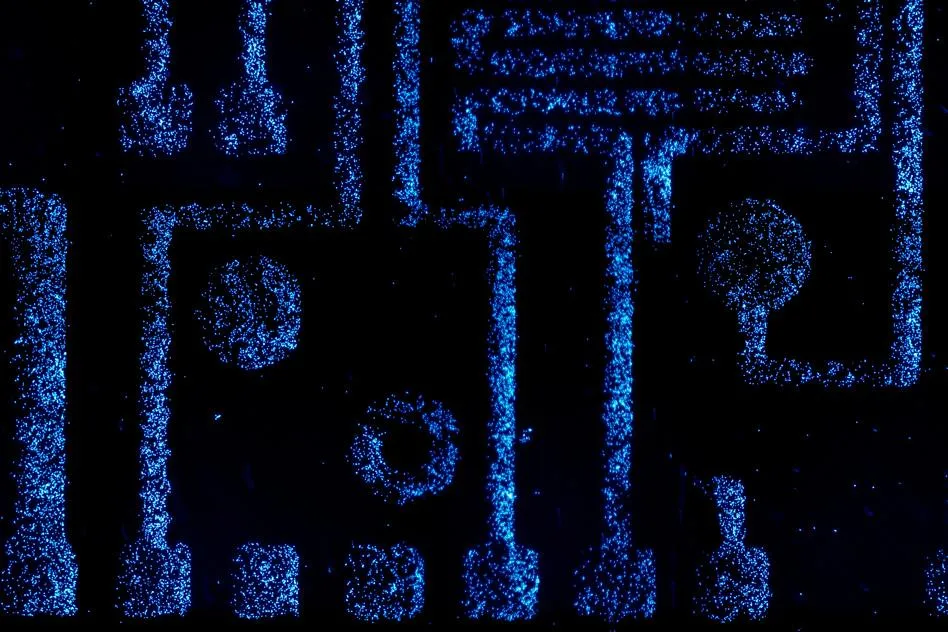The Same Probiotic That’s In Your Yogurt Could Detect Liver Cancer
Take a dose of this bacteria, genetically altered by scientists at MIT, and your urine will glow if liver cancer is present
/https://tf-cmsv2-smithsonianmag-media.s3.amazonaws.com/filer/16/8f/168fed43-847c-4419-8fb5-441d466f5636/mit-cancer-probiotics-1.jpg)
For nearly half a century, beginning in the 1890s, William B. Coley injected streptococcal organisms into thousands of his patients with inoperable late-stage cancer at Memorial Hospital in New York City. It worked. In most cases, the procedure shrank their tumors, and one patient lived 26 more years before dying of a heart attack. But, several others died of bacterial infection.
Since then, there’s been ongoing research into bacterial therapies for cancer. But scientists from MIT and University of California, San Diego have found a new use for bacteria—to detect cancer, rather than treat it.
The team's study, published in the journal Science Translational Medicine in May, explains how they genetically alter a strain of E.coli bacteria, Nissle 1917, so that when it encounters tumors in the liver, it releases a luminescent enzyme that shows up in urine samples.
"We specifically programed these probiotics to make a molecule that would change the color of your urine to indicate the presence of cancer," says Tal Danino, one of the lead authors on the paper.

They engineered Nissle 1917—the same probiotic that’s often in yogurt to keep your digestive tract moving—to produce a naturally occurring enzyme called lacZ when there are tumors present in the liver. They also injected lab mice with a molecule made of galactose and luciferin, the luminescent protein that fireflies produce. Luciferin doesn’t glow when it’s bound to the sugar, but when there is cancer present, the lacZ encounters the molecules and splits the galactose from the luciferin. The luciferin then glows and exits the body in urine.
Other cancer diagnostics have used urine tests, especially with bladder and prostate cancer, but they aren't widespread, because they can have low sensitivity—they miss some cancers.
“The signal we used most often was a luminescence-based one that could be tested by a simple luciferase assay—imagine a lab test here—or could be simplified to be visual,” says Sangeeta Bhatia, one of the senior authors on the paper and a professor of health sciences, electrical engineering and computer science at MIT.
“There is a large clinical need for detection of liver metastases at early stages, since there are many methods for treating these at the early stages,” she says. Survival rates are significantly higher when the cancer is caught early. They decided an oral administration would work best because the hepatic portal vein transports the bacteria straight from the digestive tract to the liver. Nissle is common enough that they were able to order it in liquid form on Amazon.
The liver plays an important role in cancer detection because many major cancers, like breast and colorectal, metastasize there. It’s a crucial indicator, but it’s also tricky, because it can be hard to get good images of it using traditional detection methods, like CT scans or MRIs.
“It is also important because bacteria traffic to the liver naturally so they can colonize these metastastes,” Bhatia says. According to the report, “In tests in mice with colon cancer that has spread to the liver, the probiotic bacteria colonized nearly 90 percent of the metastatic tumors.”
Bhatia and her teammates were initially looking to use bacteria as a cancer treatment, but they switched modes to work on the diagnostic technique. While they continue to think about bacteria therapy, they’re refining this test.
“We are working on understanding the trafficking of these probiotics from the gut into the liver and determining what other types of cancers can be used with this approach,” Bhatia says.
/https://tf-cmsv2-smithsonianmag-media.s3.amazonaws.com/accounts/headshot/DSC_0196_2.JPG)
/https://tf-cmsv2-smithsonianmag-media.s3.amazonaws.com/accounts/headshot/DSC_0196_2.JPG)